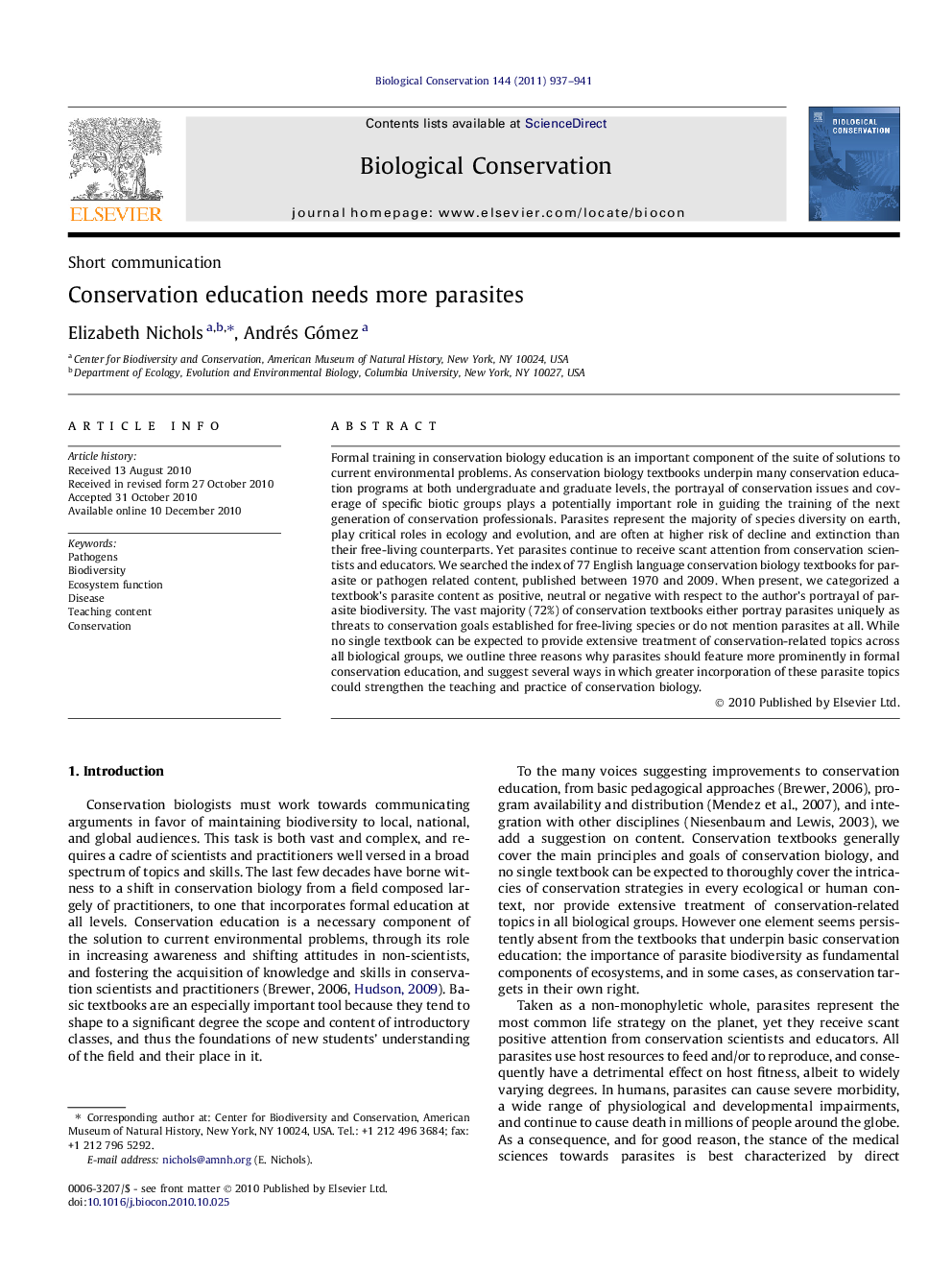| کد مقاله | کد نشریه | سال انتشار | مقاله انگلیسی | نسخه تمام متن |
|---|---|---|---|---|
| 6301271 | 1304542 | 2011 | 5 صفحه PDF | دانلود رایگان |
عنوان انگلیسی مقاله ISI
Conservation education needs more parasites
دانلود مقاله + سفارش ترجمه
دانلود مقاله ISI انگلیسی
رایگان برای ایرانیان
کلمات کلیدی
موضوعات مرتبط
علوم زیستی و بیوفناوری
علوم کشاورزی و بیولوژیک
بوم شناسی، تکامل، رفتار و سامانه شناسی
پیش نمایش صفحه اول مقاله

چکیده انگلیسی
Formal training in conservation biology education is an important component of the suite of solutions to current environmental problems. As conservation biology textbooks underpin many conservation education programs at both undergraduate and graduate levels, the portrayal of conservation issues and coverage of specific biotic groups plays a potentially important role in guiding the training of the next generation of conservation professionals. Parasites represent the majority of species diversity on earth, play critical roles in ecology and evolution, and are often at higher risk of decline and extinction than their free-living counterparts. Yet parasites continue to receive scant attention from conservation scientists and educators. We searched the index of 77 English language conservation biology textbooks for parasite or pathogen related content, published between 1970 and 2009. When present, we categorized a textbook's parasite content as positive, neutral or negative with respect to the author's portrayal of parasite biodiversity. The vast majority (72%) of conservation textbooks either portray parasites uniquely as threats to conservation goals established for free-living species or do not mention parasites at all. While no single textbook can be expected to provide extensive treatment of conservation-related topics across all biological groups, we outline three reasons why parasites should feature more prominently in formal conservation education, and suggest several ways in which greater incorporation of these parasite topics could strengthen the teaching and practice of conservation biology.
ناشر
Database: Elsevier - ScienceDirect (ساینس دایرکت)
Journal: Biological Conservation - Volume 144, Issue 2, February 2011, Pages 937-941
Journal: Biological Conservation - Volume 144, Issue 2, February 2011, Pages 937-941
نویسندگان
Elizabeth Nichols, Andrés Gómez,